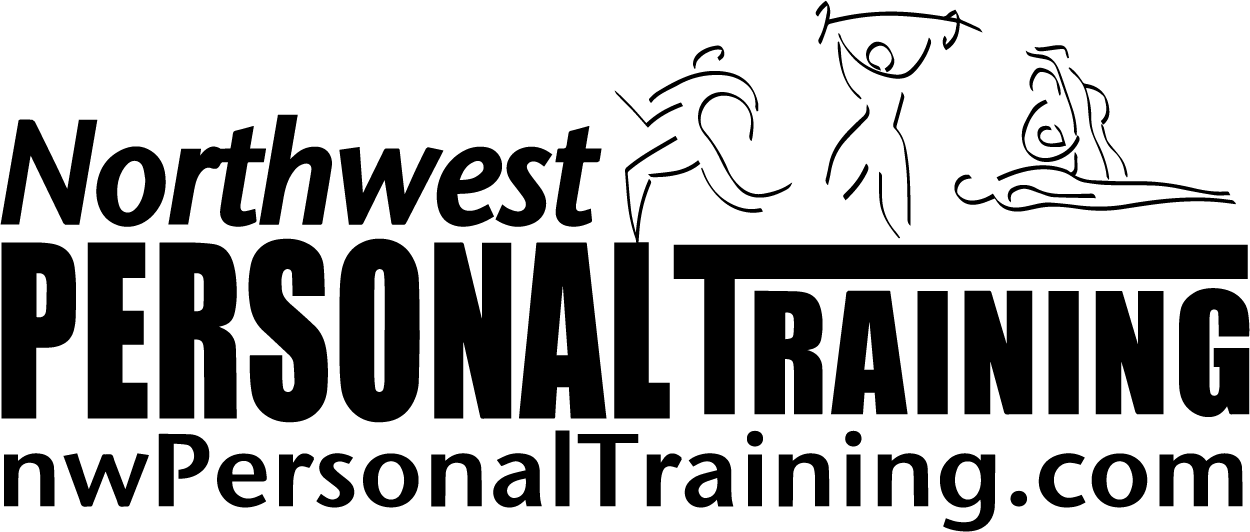 We always have clients that come to us and say that they have been struggling to lose weight and keep it off for a long long time. It doesn’t have to be that way! Here is what I suggest and it really does work!
We always have clients that come to us and say that they have been struggling to lose weight and keep it off for a long long time. It doesn’t have to be that way! Here is what I suggest and it really does work!
A common client question: I want to lose 20 pounds but have not been able to lose more than 8 pounds and am struggling because the weight is starting to creep back on! I exercise 6 days per week walking on the treadmill. I was advised to walk at a lower intensity for a longer time – is that good for weight loss? I try and life some weights one to two times a week for 20 minutes. I try to eat approximately 1200 calories but often sugar is my downfall. Any suggestions on what I can do lose the 20 pounds and keep it off? Please help! N.D.
As a Personal Trainer, the number one request I get from clients is to help them lose fat. It’s interesting to note that the general public is more health-conscious and the availability of healthy products has increased dramatically and yet, our population continues to get fatter. So why do we continue to gain weight? Consider the amount of calories we no longer expend everyday because of labor-saving devices like escalators, elevators, remote controls, computers, and urban transportation. We also live in a society where food is in abundance. Portion sizes tend to be huge and processed foods fill our cupboards and fridges. Expending less energy, consuming more food and a society where exercisers are a minority results in a society that is getting fatter!
So what can you do about it? You’ve got 4 choices: diet, exercise, both or liposuction. The first option will definitely result in failure. Ninety-eight percent of people who go on restrictive diets gain the weight back. It appears that losing the weight in the first place, is not the hard part. In fact, people successfully lose weight all the time. It’s keeping the weight off that’s the hard part. The problem is that when you diet using excessively low calories you lose valuable, energy-burning muscle tissue which drops your metabolism making it easier to put the weight back on. And secondly diets are, by nature, a short-term phenomenon. You often feel deprived during the diet-stage and thus, once you’ve lost the desired weight you return to old habits and patterns and the weight is quickly regained.
The second option to lose fat is exercise. This is a good choice but unfortunately, for many people, exercise by itself can be a painfully, slow process. When people are looking for immediate results, they often don’t have the patience to wait!
The third option is to exercise and eat healthy simultaneously. Research has found this method to be most successful at reducing body fat and, most importantly, helping to keep it off.
The final option, surgery/liposuction, is a costly choice. Furthermore, if the diet and exercise habits of the individual are not altered, the individual will eventually get fat again. For example, with liposuction, even though they may have less fat cells, the fat cells they still have can get bigger!
Here’s a Fat Loss program that incorporates exercise and healthy eating that will ensure you reduce your body fat safely, effectively and permanently:
Aerobic Exercise:
The American College of Sports Medicine recommends aerobic exercise 5-7 days/week for 20-60 minutes each session to maximize fat loss. Aerobic activities include exercise like walking, running, cycling, swimming, fitness classes, hiking, cross-country skiing, stairclimbing and rowing. So…is low intensity exercise for a longer duration is better for fat loss? If you’re a beginner, this is a good starting point because if you try to go too hard, you will fatigue too quickly and won’t expend enough energy. But as your fitness level improves, I recommend varying your intensity and duration for maximum fat loss results. For example, one to two days per week go long and easy (45 plus minutes about 50-60% of your maximum heart rate), one to two days per week go for a medium duration and intensity (30-45 minutes at 60-75% of your maximum heart rate) and one to two days per week go short and hard (20 minutes at 75-85% of your maximum heart rate). To fine-tune your program, I would suggest you vary your intensity and duration as noted above and incorporate a different activity to compliment your walking program. Remember this; if you always do the same activity, duration and pace, your body gets used to this program quickly. You’ve got to mix it up to maximize results.
Resistance Exercise:
Regular strength training workouts are also critical to maximize fat loss. Muscle is an energy-burning tissue and therefore, if you have more of it, your metabolism revs at a higher rate making it easier to burn fat both during and after exercise. You’re currently spending 20 minutes twice per week on muscle conditioning. I would like to see you gradually increase the duration up to about 40-60 minutes twice per week. This should produce some great results.
Eat 5 small meals and snacks each day:
Studies indicate that when people eat more regularly throughout the day, they are less likely to overeat or indulge in less-healthy choices. Food at regular intervals also maintains a more balanced blood sugar level which keeps your energy levels higher throughout the day. Try to consume smaller meals or snacks every 2-3 hours during the day. So I encourage you to start planning out your meals and your day better.
Drink a gallon of water every day:
Our body is 50-60% water and when we are dehydrated, our body and it’s organs and systems don’t function at their optimal level. This limits your ability to exercise intensely and ultimately, will affect your ability to burn body fat. Many scientists also suggest that headaches, minor aches and pains, low energy, sleeping problems and injuries may be a result of dehydration! Drinking a gallon of water each day will replenish the fluids you lose throughout the day as a result of normal human respiration.
Focus on what you should be eating instead of what you shouldn’t be eating:
Ensure you consume 5 vegetable and 3 fruit servings every day. Fruits and vegetables are high in nutrients and water-content and low in fat and calories. It’s much more difficult to overeat when your diet consists largely of fruits and vegetables. If you fill up on your fruits and veggies, you’re going to have less room for the high-fat, nutrient-poor foods.
Practice the 80:20 rule:
You can’t expect to be perfect for the rest of your life and setting these types of high expectations will definitely set you up for failure and feelings of inadequacy. Instead of saying, I’m never going to eat chocolate again, decide that you’ll eat it only once per week. Instead of determining that you’re going to eat perfectly 7 days a week, decide that you’ll eat really healthy 5 days a week and then 2 days, you’ll allow for a few indulgences. This is much more realistic and is something that you can adhere to for the rest of your life. We have to stop thinking “All or Nothing”. This just leads to failure and then the resultant binges. Remember that if you want to be 20 pounds lighter 10 years from now, then it’s not what you do over the next 6 weeks, but rather what you do for the next 10 years! So ask yourself, what type of a nutrition plan can you follow forever!
Limit your alcohol intake:
Alcohol poses a number of problems. It is high in calories and lacking nutrient value. In addition, and probably most importantly, alcohol reduces your inhibitions. You may be more inclined to indulge or make poor choices because you aren’t able to think clearly or examine the long term consequences. Of course, many can’t commit to never drink again, but instead of drinking every night with dinner, limit it to once or twice per week.
Increase your daily activity:
Try to think of ways that you can be more active throughout your day without having to actually exercise. The calories expended from walking a few extra blocks, taking the stairs, or performing errands in an active fashion really add up! If we could learn to just be more active throughout the day, we wouldn’t have to spend hours in the gym!
Try not to eat large amounts of food past 8:00pm:
Eating late at night often goes hand-in-hand with high-fat snacks and overeating. Try to eat the majority of your calories earlier in the day.
Keep an activity and food log:
Record your daily exercise and what and how much you eat. Some researchers have found that just the act of recording the foods you eat, result in better choices and a healthier diet. Also by writing everything out, you may also start to notice patterns. For example, you may observe that the days you don’t exercise are also the days you eat poorly. You can then take appropriate action.
My last final words of wisdom are to be patient, persistent and consistent! Know that every positive action you take will ultimately make you a fat burning machine!
Yours in Health & Fitness,
Sherri McMillan
Like us on Facebook and get FREE instant access to my “Achieving your Personal Best” eVideo – Learn the critical steps to help you lose weight, feel great and live your best life.
Don’t forget to sign up to receive my blog posts in your inbox!



